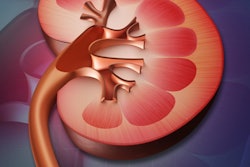MRI of the liver is more accurate than liver biopsy in determining total body iron balance in patients with sickle-cell disease and other disorders that might require blood transfusion therapy.
That conclusion comes from a new study from the Saban Research Institute of Children's Hospital Los Angeles (CHLA) published online February 20 in Magnetic Resonance Imaging. Based on the results, lead author Dr. John Wood, PhD, a cardiologist and biomedical engineer at CHLA, and colleagues recommended that MRI be the new "gold standard" for determining iron accumulation in the body.
The study evaluated 49 patients who received treatment with an experimental chelating agent. The researchers first monitored the amount of iron the patients received by transfusion and the amount of chelating agent they consumed. MRI estimates of iron concentration were then taken from the whole liver, eliminating the error and variability involved with a biopsy.
MRI was used to measure liver iron at the time of initial treatment, and again after three, six, 12, and 24 months of blood transfusion therapy. The MRI liver iron measurements were more accurate, even when compared with optimum liver biopsies, the researchers concluded.


.fFmgij6Hin.png?auto=compress%2Cformat&fit=crop&h=100&q=70&w=100)





.fFmgij6Hin.png?auto=compress%2Cformat&fit=crop&h=167&q=70&w=250)











